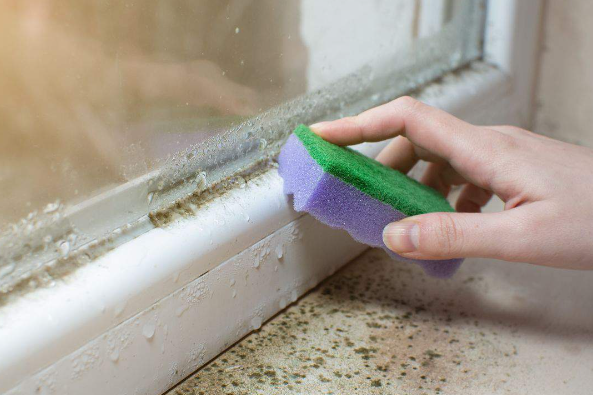Is Mould and Damp the Tenant’s Fault? A Closer Look at Responsibility

It’s a familiar scene in many British homes: black spots creeping up the walls, a musty smell lingering in the air, and the inevitable finger-pointing between tenants and landlords over who’s to blame for mold and damp. The question is often framed as a simple one: is this problem caused by the tenant’s lifestyle, or does the landlord bear responsibility? The answer, as with most things, is not black-and-white—but let’s break it down with clarity, as we always aim to do.
The Science of Mold and Damp
Mold thrives in damp, poorly ventilated environments. Condensation, a leading cause of damp, occurs when warm, moist air meets cold surfaces, like windows or uninsulated walls. In Britain’s cold, wet climate, homes can become breeding grounds for mold if not properly managed. The argument often made by landlords is that tenants’ habits—cooking, showering, drying clothes indoors, or failing to ventilate—create the excess moisture that leads to mold. And there’s truth to this: everyday activities do produce moisture. A single person can generate several liters of water vapor daily through breathing, cooking, and washing.
In Germany, they tackle this with a practice called Stoßlüften—crash ventilation. Every morning, windows are flung open for a few minutes to flush out moist air and replace it with fresh, drier air. This prevents the buildup of humidity that fuels mold growth. So why isn’t this common in Britain? The answer lies partly in economics and partly in culture.
The Cost of Ventilation
Opening windows in the dead of winter lets out warm air—air you’ve paid to heat. With energy prices biting, this feels like throwing money out the window, quite literally. For tenants, especially those on lower incomes, the cost of reheating a home is a real barrier. Surveys, including our own at the BBC, show that renters typically spend 30-40% of their income on rent alone. For many, this leaves just 60% of their budget to cover all other expenses—energy, food, transport, and more. If you’re earning an average or below-average salary, as many renters do, there’s little wiggle room. The choice between ventilating properly and keeping the heating bill manageable is a stark one.
This brings us to the heart of the issue: can landlords really wash their hands of responsibility when their tenants are stretched so thin? If a tenant can’t afford to run the heating or ventilate adequately because so much of their income goes to rent, the landlord’s pricing model becomes part of the problem.
The Economics of Renting
Let’s rewind to the 1970s, when house prices were typically four times the average annual income. Today, that multiple has ballooned to eight or even eight-and-a-half times the average income—and for renters, who are often on lower-than-average salaries, the squeeze is even tighter. Landlords charging rents that eat up 40% or more of a tenant’s income aren’t just setting a price; they’re shaping the tenant’s ability to maintain the property. If you’re left with barely enough to cover essentials, how do you afford the extra heating or dehumidifiers needed to keep mold at bay?
This isn’t to say tenants have no role to play. Simple steps like using extractor fans, avoiding drying clothes on radiators, or cracking a window after a shower can make a difference. But expecting tenants to bear the full burden ignores the structural issues at play—both in the property and the wider economy.
The Landlord’s Role
Landlords have a legal duty to ensure their properties are free from serious hazards, including damp caused by structural issues like leaks or poor insulation. But condensation-related damp, which is often the culprit behind black mold, is trickier. It’s frequently labeled a “lifestyle” issue, absolving landlords of responsibility. Yet, if a property lacks adequate ventilation—say, no extractor fans in the bathroom or kitchen, or windows that don’t open properly—the tenant’s options are limited. Add sky-high rents into the mix, and the tenant’s ability to manage damp is further constrained.
Some landlords argue they can’t control how tenants live. But when rents consume such a large chunk of income, they’re indirectly dictating how tenants can afford to live. A property that’s affordable leaves room for tenants to run the heating, ventilate properly, and invest in small fixes like dehumidifiers. A property that’s priced at the upper limit of affordability does not.
A Shared Responsibility
So, is mold and damp caused by the tenant’s lifestyle? Sometimes, yes—habits like poor ventilation or drying clothes indoors can contribute. But pinning it solely on tenants ignores the bigger picture. Landlords who charge rents that leave little disposable income are complicit in creating conditions where tenants can’t afford to manage damp effectively. Properties with inadequate insulation or ventilation systems exacerbate the issue. And Britain’s reluctance to adopt practices like crash ventilation stems from a mix of cultural habits and economic pressures.
The solution lies in shared responsibility. Landlords should ensure properties have proper ventilation and insulation, and rents should allow tenants enough financial breathing room to cover the costs of living in them. Tenants, in turn, need to adopt practical habits to minimize moisture buildup. Until both sides meet in the middle, the black spots on the walls will keep coming back—and so will the arguments.
